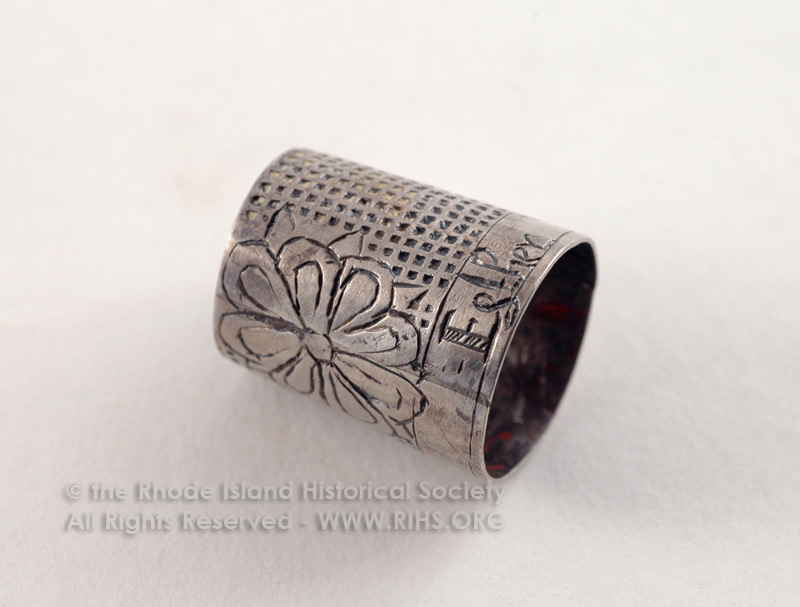As soon as humans developed a sewing needle that could stab you in the finger while sewing presumably the thimble was invented. The earliest thimble examples date from the 3rd Century BCE.
Made of leather, ivory, wood, metals and more, thimbles are worn over the end of your finger (or thumb) to protect it from the end of the needle with the eye as you push the thread through the cloth or leather. Up until mass manufacturing took over in the late 18th Century, thimbles were crafted for an individual one at a time.

There is debate as to whether the thimble is an early example of colonial silversmithing or is an example of an English thimble that was imported. What we can say for certain is that the thimble was found in the remains of the Willitt house in what is now East Providence when Col. H. Anthony Dyer (1872-1955) was building a house around the remaining chimney in the early 20th Century. When the thimble was discovered by the builders it was flattened, it was straightened and bent back into shape. The Willitt (sometimes Willett) house belonged to Thomas Willett, first English mayor of New York, Esther Willitt (b.1648) was his daughter.
Col. Dyer’s wife donated the thimble to the Rhode Island Historical Society in 1925.
For more information about the history of thimbles and other tools check out these books in our Research Library:
A History of Thimbles by Edwin F. Holmes
Early Thimbles by Diane Pelham Burn
Old-time tools and toys of needlework by Gertrude Whiting
~Dana Signe K. Munroe, Registrar

One thought on “Object Thursday: A Thimble Full”